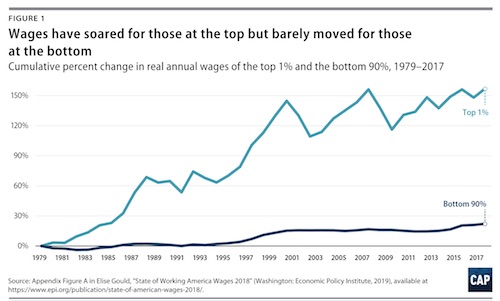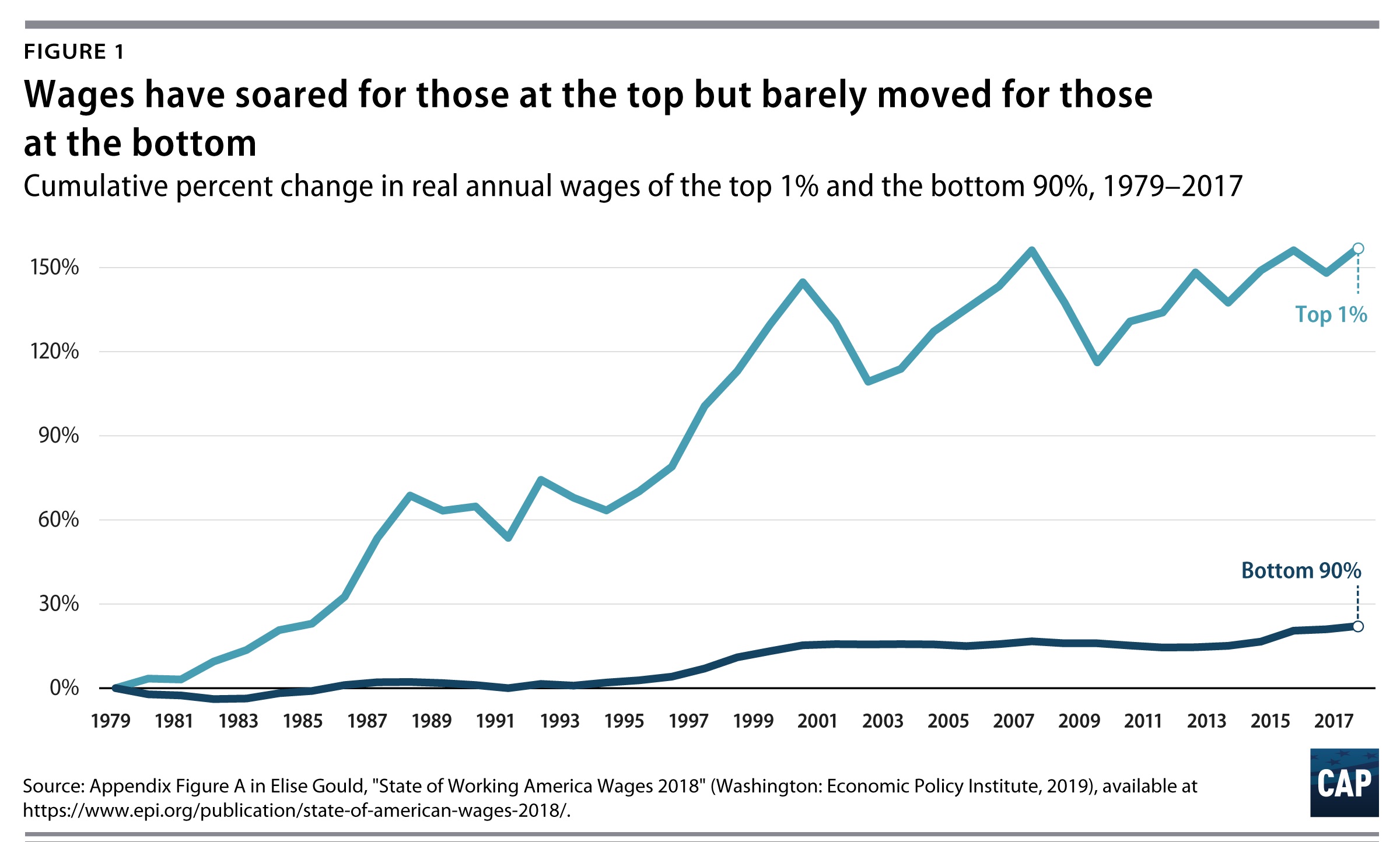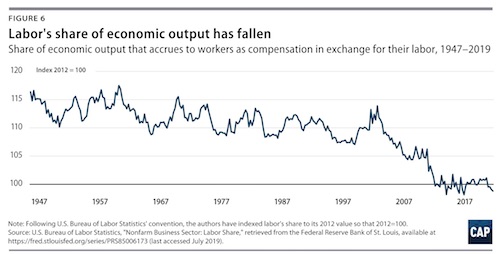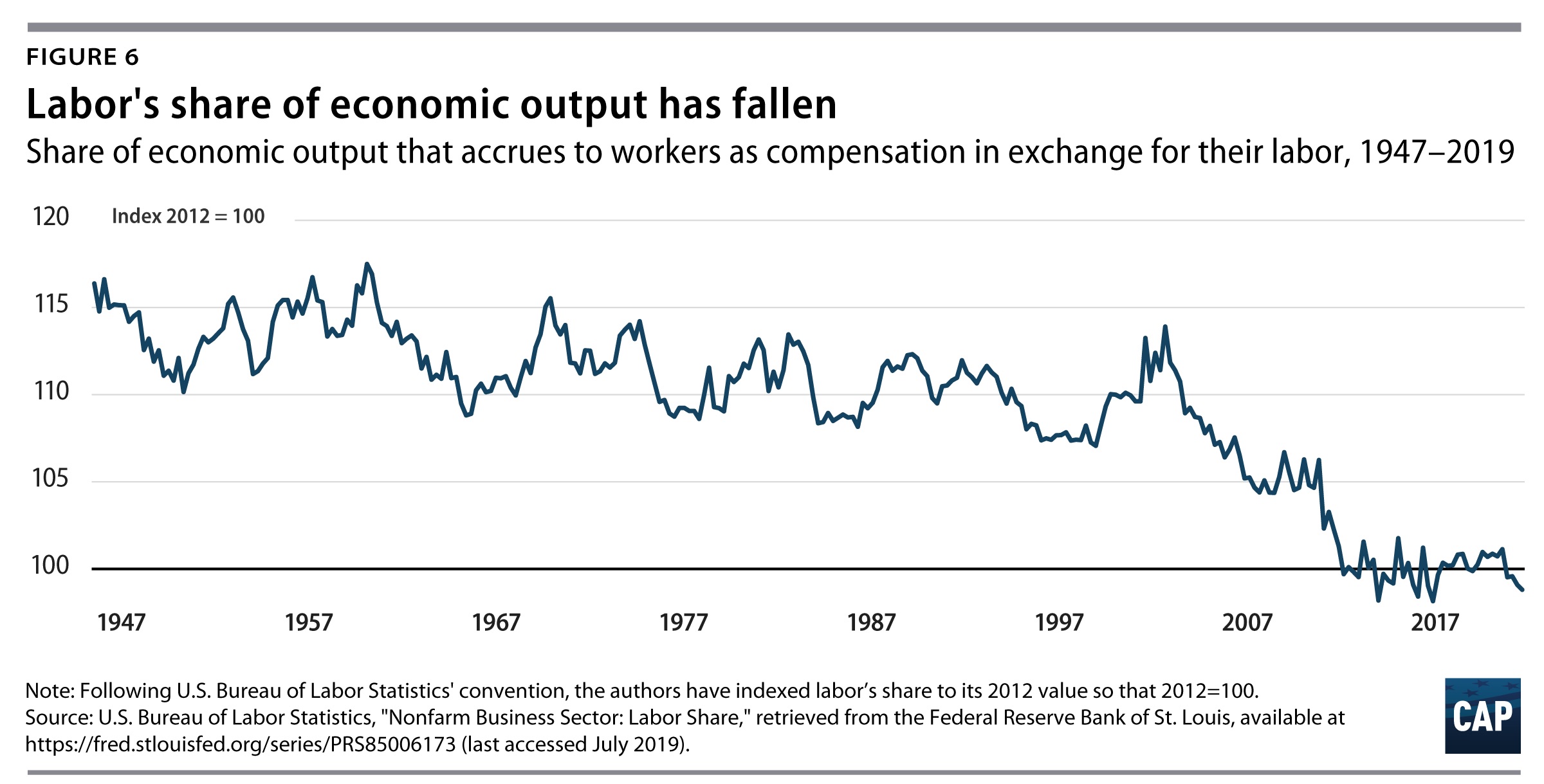CEO compensation has
skyrocketed 940 percent over the past 40 years in the United States, 78 times
the rate of growth in workers’ pay and benefits, according to one of two new
studies that challenge the upbeat conventional wisdom about today’s economy.


|
| A relatively small wage gap between top earners and the rest of the workforce began to soar in the early 1980s, rising to today’s staggering disparity.
|
“Exorbitant CEO pay is a major contributor to rising inequality. This escalation… has fueled the growth of top 1 percent and top 0.1 percent incomes, leaving less of the fruits of economic growth for ordinary workers and widening the gap between very high earners and the bottom 90 percent,” the Economic Policy Institute states in an August report.
“The economy would suffer no harm if CEOs were paid less (or taxed more),” it adds.
A report published the same week by the Center for American Progress explores what’s missing from economic headlines roaring about booming corporate profits, off-the-charts executive pay and record amounts of stock buybacks.
“Wages and family wealth have barely budged after decades of stagnation,” the “Corporate Governance and Workers” report states. “This is a dangerous situation, as the deep imbalances in how the U.S. economy works—and whom it fails to work well for—increasingly expose America to social and political division.”
The erosion of workers’ bargaining power after decades of political and court attacks on unions is high on CAP’s list of reasons for the compounding disparities.
“Unions were, in large measure, the most important check on corporate management” when union density was high in the 1950s and 60s, the report states.
Companies in that era that refused to pay fair wages or meet unions’ other reasonable demands risked costly, disruptive strikes. But as labor’s density declined, so did its leverage. Increasingly, corporate boards and executives were less motivated to do right by their workers.
Their strategies today “prioritize Wall Street and corporate executives over the rest of the stakeholders,” CAP argues, a group that includes “the consumers who buy their products and services; workers and suppliers who produce them; investors who provide capital and other know-how; and even communities who provide a clean, safe environment and educated workers.”


|
| Another gauge of the income gap is labor’s share of economic output – the percentage of compensation that workers receive relative to the total value of goods and services produced in a given year. Workers’ share has been on a steep downhill slide since the early 2000s.
|
Strong contracts negotiated by IBEW and other unions are a buffer against the worst of the struggles facing millions of working families. But International President Lonnie R. Stephenson urges members to consider the big picture.
“The good wages and benefits we bargain for don’t isolate us from economic realities,” he said. “Doing well individually isn’t enough. If the economy doesn’t start working for everyone, all of us outside the 1 percent are going to feel the pain.”
Data in both reports illustrate how extreme the income gap has become. One indicator is labor’s share of economic output – the percentage of compensation that workers receive relative to the total value of goods and services produced in a given year.
Bureau of Labor Statistics show a moderate decline from the 1970s to the end of the century, and then a sharp plummet from about 2000 onward.
“Notably, the gap between the 1950s and today may be even starker,” the CAP report clarifies, “as these data do not break out higher-income workers whose wages are growing at a faster pace than mid- and low-wage workers.”
EPI’s paper suggests the gap may be wider yet, based on changes in stock offerings that comprise the largest share of compensation for CEOs and top executives.
Stock options are being replaced with stock awards that can go up or down, giving CEOs personal incentive to increase share prices. But the long vesting period for stock awards makes their value harder to gauge.
“There is increased likelihood that measures of CEO compensation will not fully capture CEOs’ gains going forward,” EPI said.
Stephenson said the only way things will begin to change is at the ballot box, by electing lawmakers who will fight for economic justice. “What we do on Election Day next November will determine whether we start to close those pay gaps, or whether they keep getting bigger.”